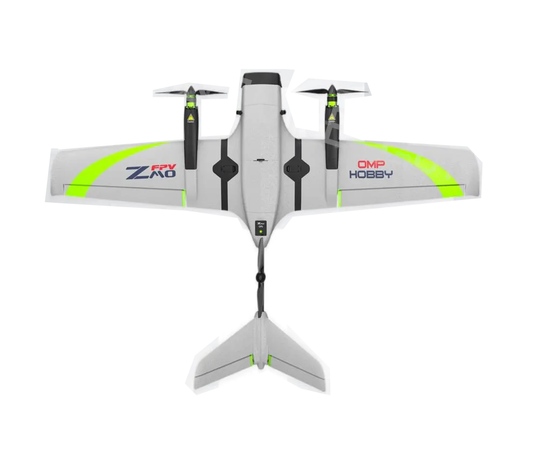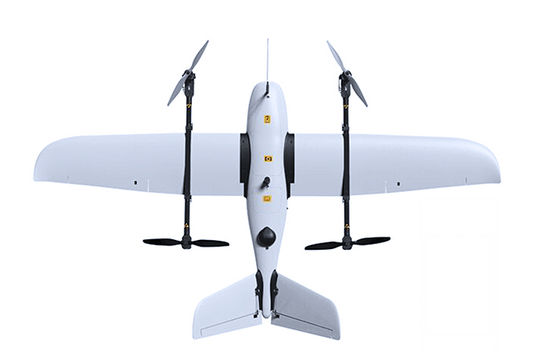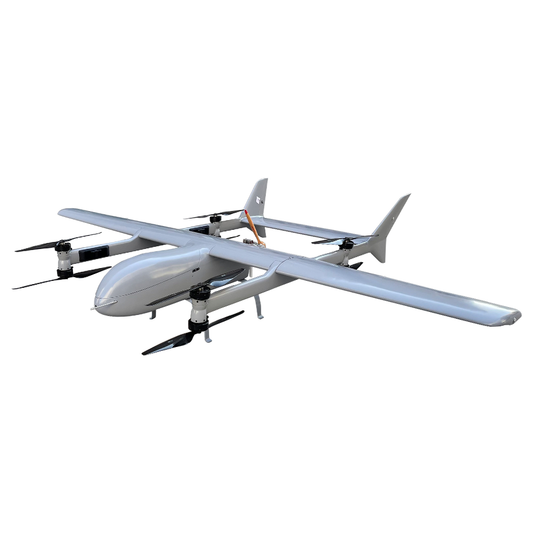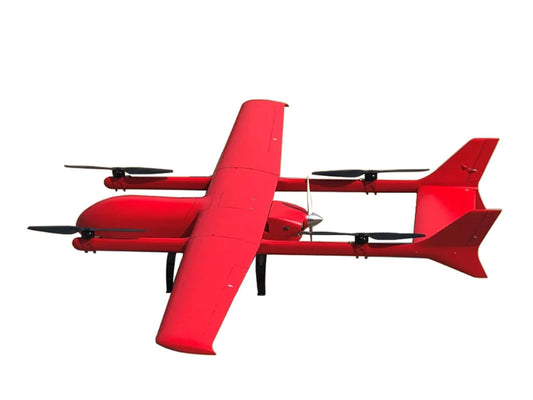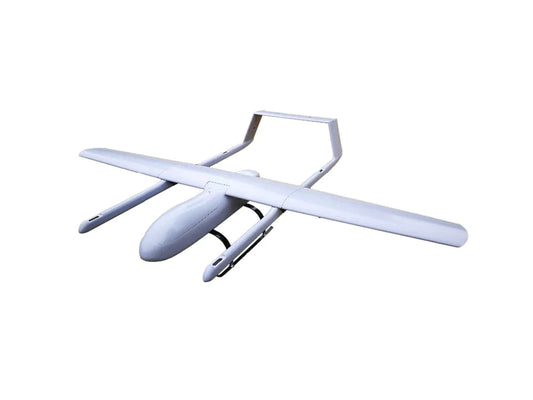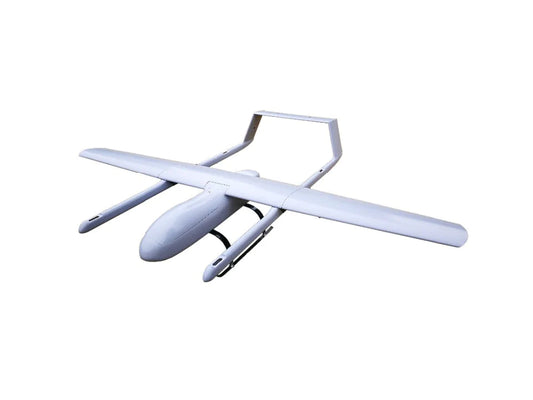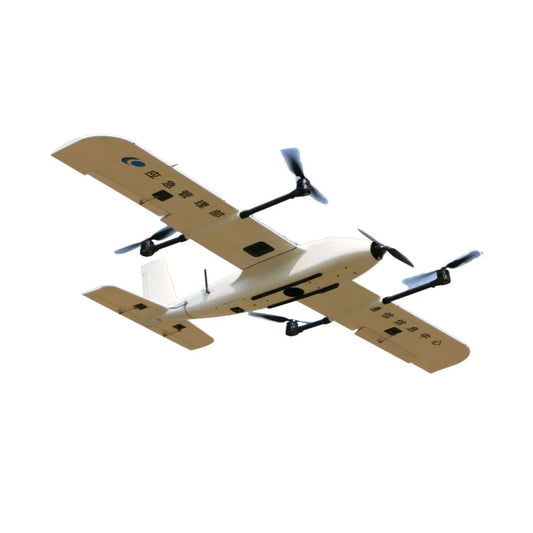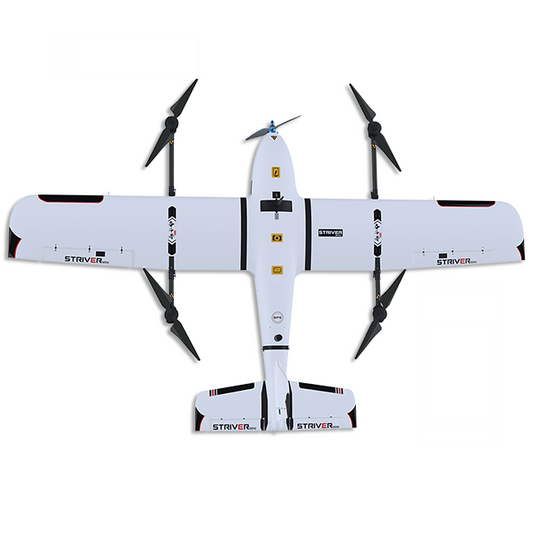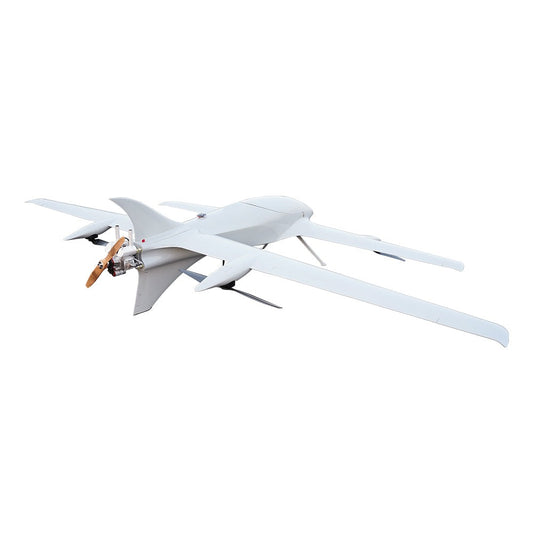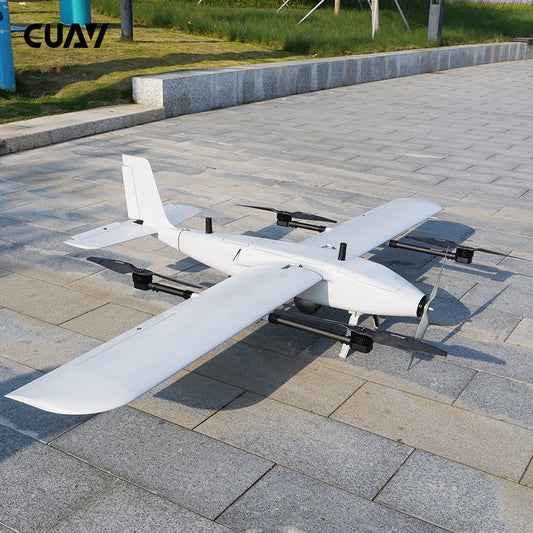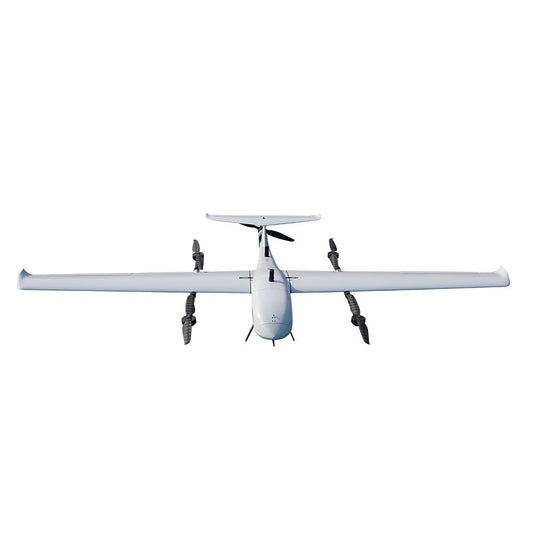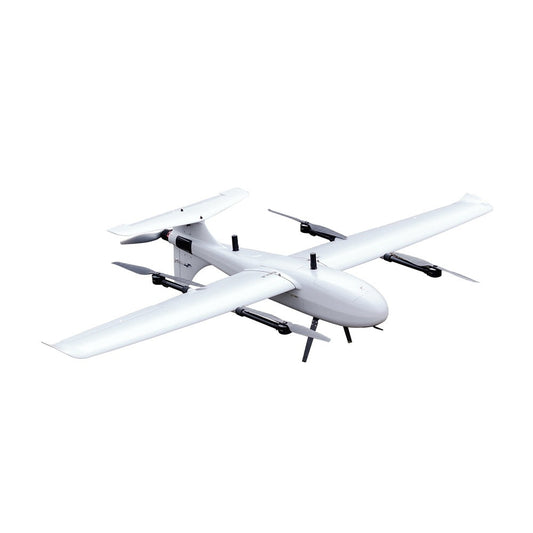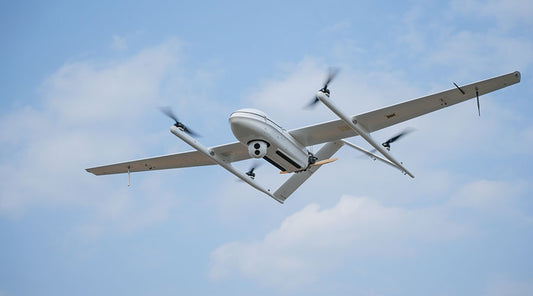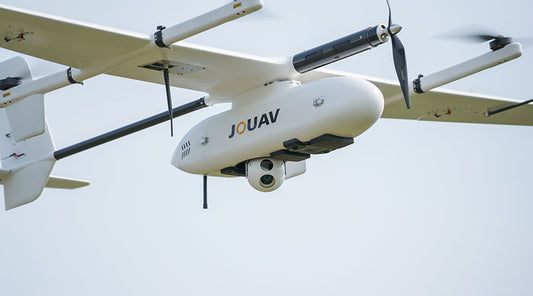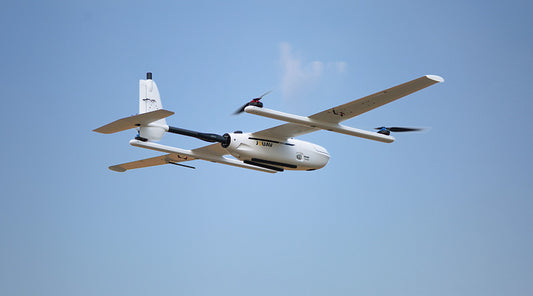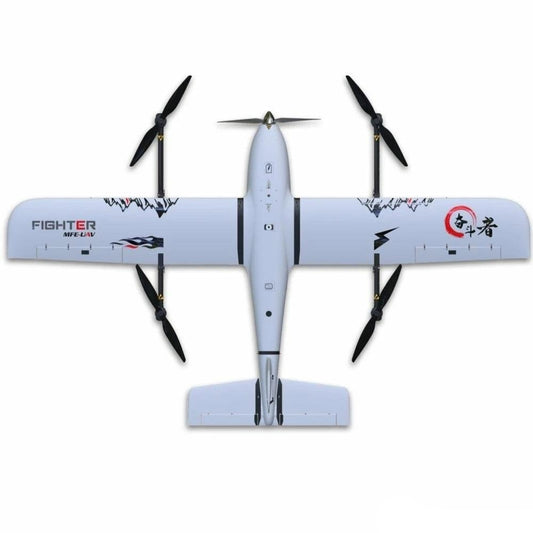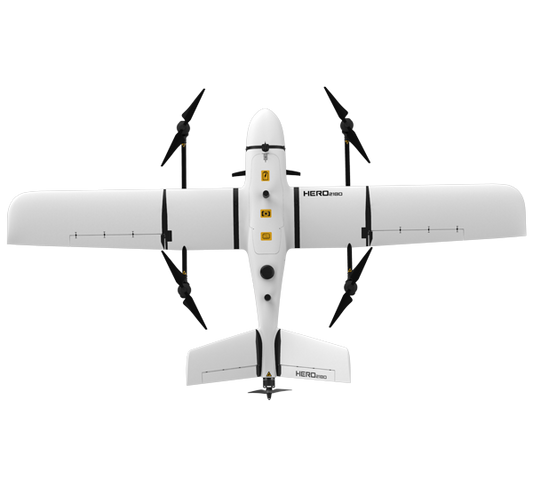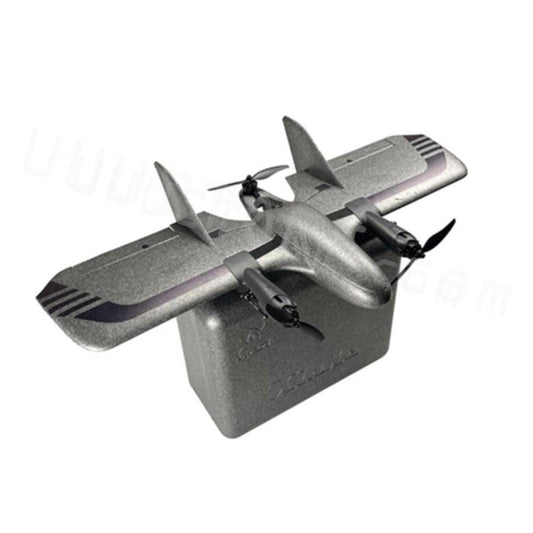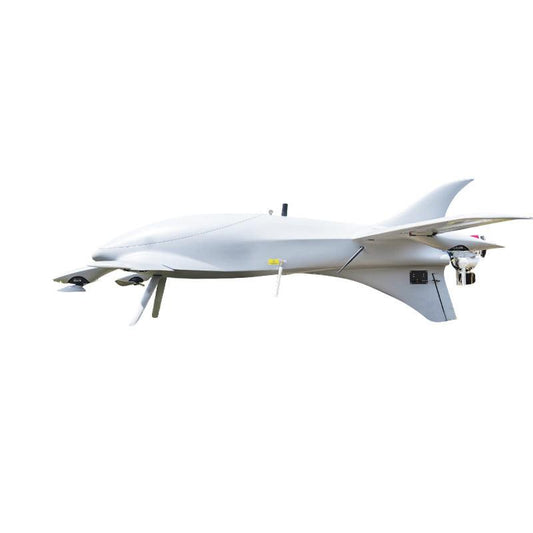Collection: VTOL Drone
Vertical Takeoff and Landing (VTOL):
VTOL, which stands for Vertical Takeoff and Landing, is a category of aircraft capable of ascending and descending vertically without the need for a runway. This technology enables aircraft to take off like helicopters and transition to forward flight like traditional fixed-wing aircraft. VTOLs come in various forms, including multi-rotors, tiltrotors, and tiltwings, each offering unique advantages in different applications.
Difference Between VTOL and Multi-Rotor:
While VTOL is a broad term encompassing any aircraft capable of vertical takeoff and landing, multi-rotors are a specific subtype characterized by multiple rotors providing lift. Multi-rotors, such as quadcopters and hexacopters, are highly maneuverable and stable in hover but may have limitations in terms of speed and endurance compared to other VTOL configurations.
Components of VTOL:
-
Rotors/Propellers:
- VTOLs typically have multiple rotors or propellers for lift. The number and arrangement vary based on the specific design, such as quadcopters with four rotors or hexacopters with six.
-
Flight Control System:
- An advanced flight control system is crucial for stabilizing the VTOL during hover, transition, and forward flight. Gyroscopes, accelerometers, and sophisticated algorithms ensure precise control.
-
Power System:
- VTOLs can be powered by electric batteries or traditional internal combustion engines. Electric systems are common for their simplicity, efficiency, and lower environmental impact.
-
Tilting Mechanisms:
- Some VTOLs employ tilting mechanisms for transitioning between vertical and horizontal flight. This could involve tilting the entire wing, rotors, or using a combination of both.
Parameters for VTOL Selection:
-
Payload Capacity:
- Consider the weight of the equipment or payload you intend to carry. Different VTOL models have varying payload capacities.
-
Endurance:
- Endurance refers to how long the VTOL can remain in the air on a single charge or tank of fuel. Longer endurance is crucial for missions requiring extended flight times.
-
Range:
- The range is the maximum distance the VTOL can travel from its takeoff point. It is a critical parameter for applications such as surveying or reconnaissance over large areas.
-
Maximum Speed:
- Maximum speed is essential for applications that require swift response times or tracking fast-moving subjects.
-
Altitude Capability:
- Some VTOLs are designed for high-altitude operations, making them suitable for specific applications such as mountainous terrain surveying or search and rescue.
Choosing a VTOL:
Selecting the right VTOL involves considering the specific requirements of your intended application. Assess factors such as payload capacity, endurance, range, maximum speed, altitude capability, environmental conditions, reliability, ease of maintenance, and integration capabilities with sensors or other accessories.
Application Scenarios:
-
Surveying:
- VTOL drones are excellent for surveying large areas efficiently. Equipped with high-resolution cameras or LiDAR sensors, they can capture detailed images for mapping and surveying purposes.
-
Reconnaissance:
- Military and security applications benefit from VTOLs' ability to hover and navigate diverse terrains for surveillance and reconnaissance missions.
-
Firefighting and Rescue:
- VTOLs equipped with thermal cameras and communication systems can quickly access hard-to-reach locations, aiding in firefighting efforts and search and rescue operations.
Accessories for VTOL:
-
High-Resolution Cameras:
- Essential for capturing detailed images during surveying or reconnaissance missions.
-
LiDAR Sensors:
- LiDAR technology enhances mapping capabilities, providing precise three-dimensional information about the surveyed area.
-
GPS Modules:
- GPS modules ensure accurate positioning and navigation during flight.
-
Communication Systems:
- Reliable communication systems enable remote operation and real-time data transmission.
Frequently Asked Questions (FAQ):
-
Q: What is the maximum range of VTOL drones?
- A: VTOL drone ranges vary, but they typically fall within the range of 10 to 100 kilometers, depending on the specific model.
-
Q: Can VTOLs operate in adverse weather conditions?
- A: Some models are designed to withstand harsh weather conditions, but operational limits may apply. It's crucial to check the specifications of the chosen VTOL for its weather resistance.
-
Q: How long does it take to learn to operate a VTOL drone?
- A: Learning times vary, but many VTOL platforms are designed for user-friendly operation. Training programs are often available to help operators become proficient in handling these aircraft.
In conclusion, VTOL technology has revolutionized various industries by offering a flexible and efficient means of aerial operations. The choice of a specific VTOL model depends on the unique requirements of the intended application, and advancements in this field continue to drive innovation and expand the possibilities of vertical takeoff and landing capabilities.
